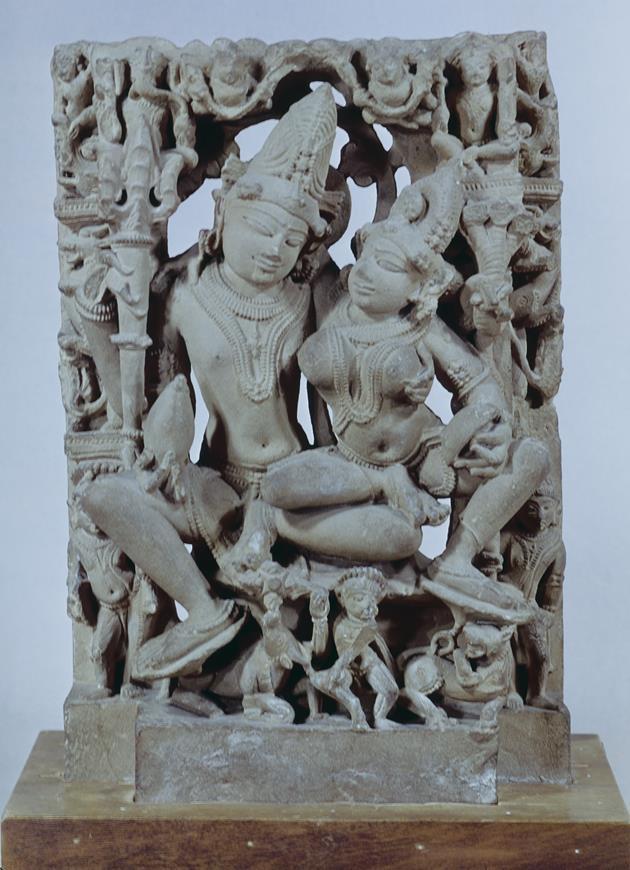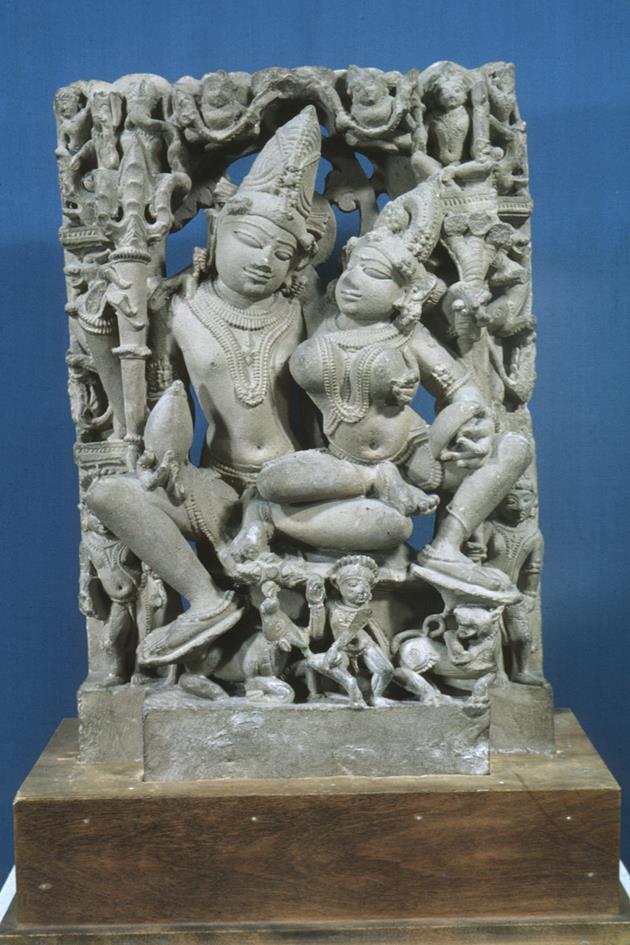Uma-Maheshvara (the god Shiva and his wife Parvati)
late 10th to early 11th century
The great god Shiva, identifiable by his trident, matted hair, and the bull below his feet, sits with his wife, the goddess Parvati. Although Shiva is one of Hinduism’s primary deities, this sculpture was not the main icon in a temple. It occupied an important place on the elaborate exterior wall, where devotees encountered it during their ritual clockwise walk around the temple. The gods, celestial attendants, and guardians on a temple’s exterior walls amplify the idea that this is god’s palace and, in concept, the center of the universe.
Sandstone
18 3/4 x 12 3/4 x 5 1/2 in. (47.63 x 32.39 x 13.97 cm)
Eugene Fuller Memorial Collection
38.23



